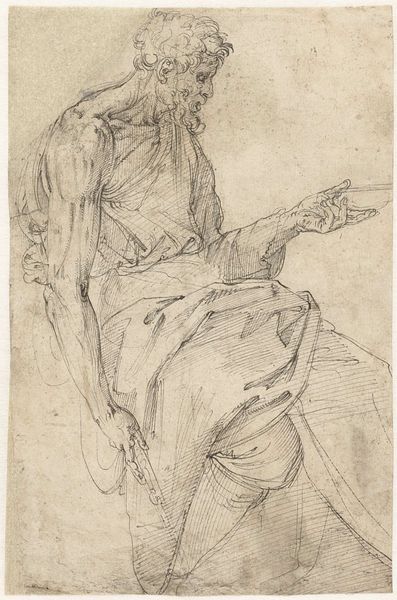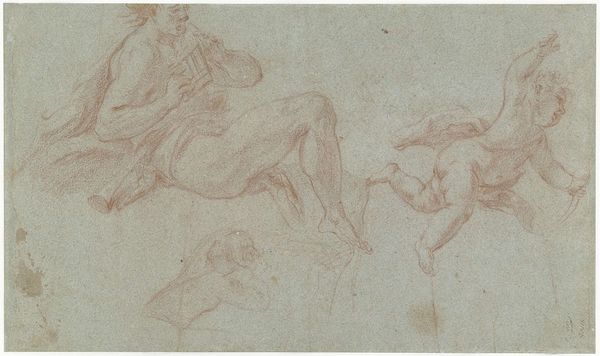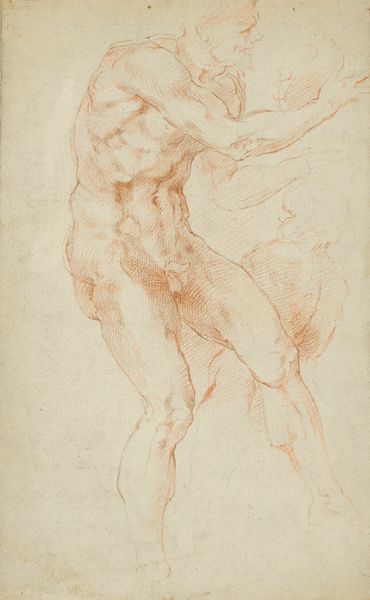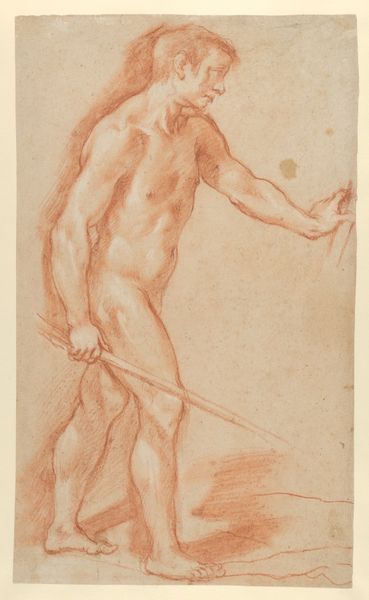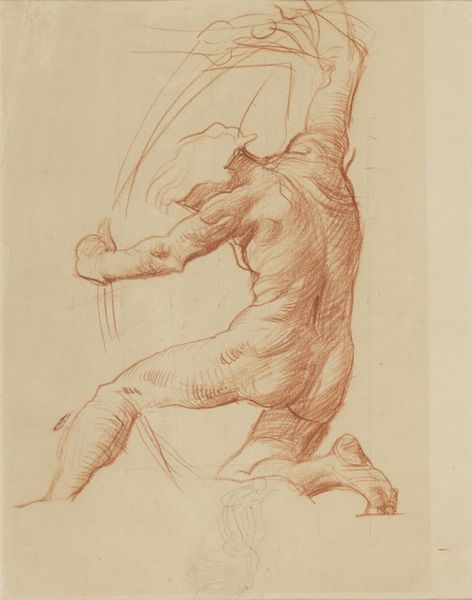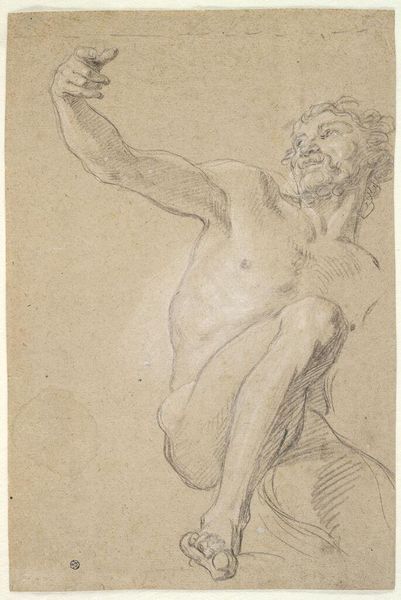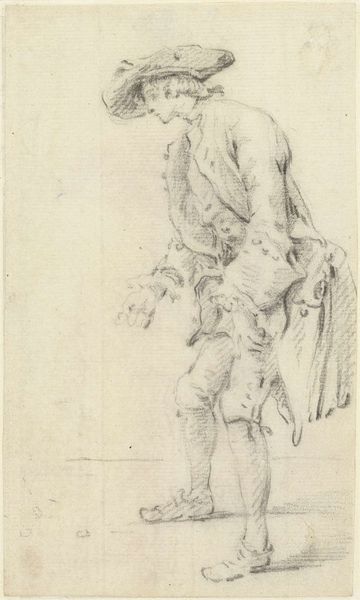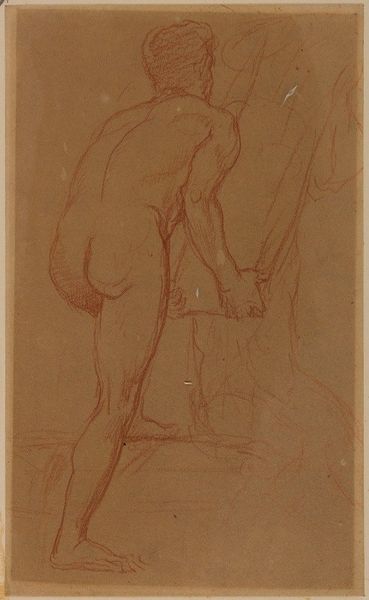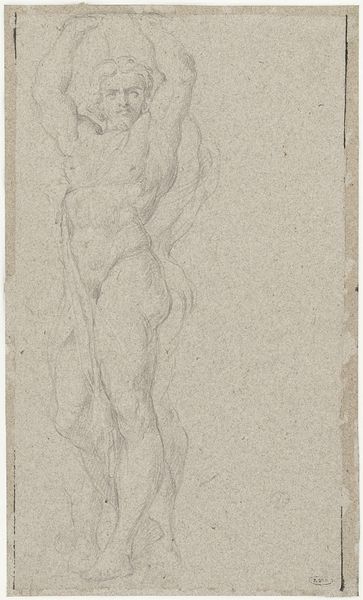
drawing, dry-media, charcoal
#
drawing
#
baroque
#
pencil sketch
#
charcoal drawing
#
figuration
#
dry-media
#
pencil drawing
#
charcoal
#
history-painting
#
academic-art
#
nude
Dimensions: height 426 mm, width 252 mm
Copyright: Rijks Museum: Open Domain
Curator: This sanguine drawing, "Study of a Kneeling Male Nude," created between 1685 and 1695 by Francesco Trevisani, immediately strikes me as intensely vulnerable. Editor: There's definitely a raw quality to it. The choice of the sanguine medium gives the figure a flesh-like warmth, yet the subject’s back is turned, his head slightly bowed. It almost reads like a representation of shame or penance. Do you think the work has some link with power structures from that time, considering its naked, almost submissive figure? Curator: Absolutely, I agree it is definitely within the context of baroque-era visual language, we can explore how masculinity was being constructed and contested. This work is definitely embedded in the traditional artistic practice where nude male figures were studied to showcase an understanding of human anatomy for painters of historical scenes. How much were these images about objectifying men at that period? To understand its creation we could use sources like letters of academies from that era that give some insight into their art training and their representation within their time. Editor: I think the baton that he’s holding might give us clues too. It’s not clear what its symbolic intent may be— is it meant to give an implication of support or defense for him. Considering our fascination with Greco-Roman ideals during this period and how male bodies embodied virility and even virtue and it definitely shows something when looking at the piece with some art historical references. Curator: True. In revisiting our interpretations now, how much of our perception hinges on 21st-century awareness of gender and power, though? Is it possible we are adding our present ideals onto it to shape its significance based off today’s world or can we accept that in its creation there was an intent to highlight power through nudity? Editor: These artistic representations still resonate, prompting us to examine our culture through them, I'm curious to see how interpretations will shift in the future, and which readings might endure. Curator: It seems a never ending dialogue and debate surrounding artistic creation that definitely challenges and inspires further insights, which is how culture transforms itself, a continued cycle that is reflected across humanity and society.
Comments
No comments
Be the first to comment and join the conversation on the ultimate creative platform.


